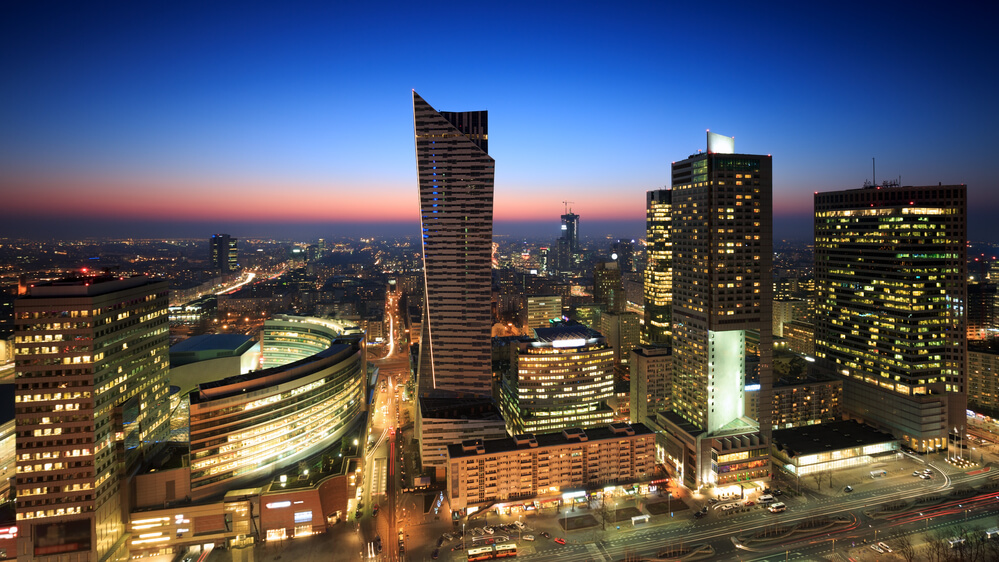Warsaw is a city of dramatic highs and lows. From its glory days as the capital of Europe’s largest empire, to the widespread destruction of the German invasion of 1939 and two uprisings in the 1940s, to its current status as a top travel destination, Warsaw is truly a phoenix that rose from the ashes. There are many sights to see in this place that has overcome much tragedy.
- Domain of Kings and Queens
- Royal Route
The majority of the historic landmarks in Warsaw are located on a single axis. In addition to townhouses, churches, academic institutions and parks, visitors can see Wilanów Palace, Łazienki Palace and the Royal Castle. The three royal residences are strong representatives of the Polish-Lithuanian Commonwealth of the Renaissance and Baroque periods.
- Inspiring Architectural Resurrection
- Old Town
The historic city centre in Warsaw is all about the meticulous manner in which the reconstruction was carried out after the turmoil of the 1930s and 1940s after nine-tenths of the city was reduced to rubble. The triumph of Warsaw’s rebirth as made tangible with the standout buildings when it gained UNESCO World Heritage Status.
- Grand Green Space
- Łazienki Park
The largest park in Warsaw has a wealth of riches to offer including monuments of national standing, palaces, a planetarium, follies, pavilions, orangeries, an amphitheatre, water features and promenades. A monument erected in honor of the composer Frédéric Chopin is one of the most renowned monuments in the park.
- Seat of the Polish Monarchs
- Royal Castle
The royal castle has been through two reconstructions following two demolitions since the mid-17th century. Presently the Mannerist and Baroque structure is a museum with displays including a collection of by masters like Gainsborough, Rembrandt, Joos van Cleve and van Dyck.
- Site of Triumph and Tragedy
- Castle Square
The square beside the Royal Castle has borne witness to many celebratory and bloody events including reception of Poland into NATO, a massacre carried out by the Russians and a riot that broke out in the Martial Law period. Today the castle is a place where many festive events take place.
- Dive into History
- National Museum
One of the largest museums in Poland is located in Warsaw. 11,000 Roman, Greek and Egyptian pieces comprise the antiquities collection, there is a vast collection of Early Modern Age art and Nubian early Christian architectural elements, frescoes and friezes can be found in the Faras Gallery.
- The Holy Grail of Architecture
- Anne’s Church
This church on Krakowskie Przedmieście was built in 1454 and has undergone reconstruction four times since. However, it is perhaps most notable for the remarkable frescoes on its barrel vault and a nave edged by Corinthian pilasters, complete with gilded capitals.
- Somber Remembrance
- Jewish Ghetto Memorial
While it is more pleasant to focus on the positive events in Poland’s history, it is important to honor those who fell during the tragic times of World War II. The Jewish Ghetto Memorial, erected in remembrance of Warsaw Ghetto Uprising of 1943, does just that. The monument was unveiled in 1946 and depicts German soldiers driving Jewish women, children and senior citizens.
Warsaw’s storied history is replete with both the best and the worst of human nature. It is, in a word, fascinating. By visiting the aforementioned sights, you can step back in time to experience it all.
Planning a travel incentive or corporate meeting in Warsaw, Poland? Contact Gavel International for more information about our programs.
This article was last updated on September 21, 2022
- Best Food in Cartagena, Colombia - February 18, 2020
- Relish the Most Delicious Eats in Buenos Aires, Argentina - February 11, 2020
- Revel in the Global Infusion of Cape Town Cuisine - February 6, 2020






